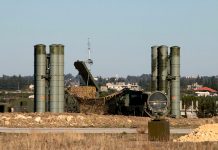
Strategic Assessment: India–South Korea K9 Vajra-T Artillery Agreement
On April 3, 2025, South Korea’s Hanwha Aerospace finalized a $253 million defense industrial agreement with India’s Larsen & Toubro (L&T) to supply key components for an additional 100 K9 Vajra-T tracked self-propelled howitzers. Signed at the South Korean Embassy in New Delhi, this transaction marks a continuation—and significant deepening—of bilateral defense cooperation that began with a 2017 order for an initial 100 units.
The arrangement not only enhances the Indian Army’s artillery modernization drive but also signals a broader geopolitical alignment between Seoul and New Delhi. Notably, the localization content of the new production batch will rise to approximately 60%, aligning with India’s Aatmanirbhar Bharat policy aimed at reducing dependence on foreign arms.
Operational Significance
The K9 Vajra-T—an Indian-specific adaptation of Hanwha’s K9 Thunder—has already proven its combat readiness, particularly during its deployment across diverse and extreme environments. These include the arid expanses of Rajasthan and the high-altitude conflict-prone zones of Ladakh, where artillery superiority remains crucial for strategic deterrence along the Line of Actual Control with China.
The platform’s proven capability was underscored during the 2020 Ladakh crisis, where the Vajra-T’s modified cold-weather systems and reinforced suspension allowed for sustained operations under sub-zero conditions. The new contract ensures continuity of domestic assembly at L&T’s Armoured Systems Complex in Hazira, Gujarat, with Hanwha providing essential components and technical support.
Technical Overview
The K9 Vajra-T is a 155mm/52-caliber self-propelled howitzer, optimized for high mobility and long-range firepower. With a 1,000 hp engine enabling speeds up to 67 km/h and an advanced fire control system, the system can deliver rapid, high-volume artillery fire. Its burst mode capability—three rounds in under 15 seconds—and sustained fire rate of 6–8 rounds per minute enable it to support fast-paced mechanized operations.
Its direct competitors include the U.S. M109A7 Paladin, Russia’s 2S19 Msta-S, and Germany’s PzH 2000. Among these, the K9 distinguishes itself with a balance of firepower, mobility, and affordability. While the PzH 2000 offers superior rate-of-fire metrics, its weight and cost make it less versatile for deployment in rugged or remote regions. Meanwhile, the M109’s shorter barrel limits its engagement range, and the Msta-S lacks the automation and digital fire control systems present in the K9 platform.
Strategic and Industrial Implications
This contract carries implications beyond the tactical level. For India, it consolidates its position as not only a major arms importer but an emerging player in global arms production and potentially, exports. With a production line already operational and a track record of meeting deadlines, India could, in concert with Hanwha, begin positioning the K9 Vajra-T in regional markets. Southeast Asian states—particularly Vietnam and Indonesia—facing escalating security demands, represent potential customers. Middle Eastern buyers, traditionally reliant on Western systems, may also explore this alternative.
From a geopolitical standpoint, this partnership reinforces both nations’ positions amid rising Chinese assertiveness. For India, the K9 serves as a critical force multiplier along a tense border with China. For South Korea, deeper defense ties with India enhance its Indo-Pacific strategic posture and diversify its defense export portfolio.
Hanwha Aerospace is already a dominant player in the global self-propelled artillery sector, commanding an estimated 50–55% of the market. The new contract adds to a growing list of international clients—most notably Poland and Norway—and secures production through 2030. The expanded localization in India indicates a deliberate strategy by Hanwha to invest in long-term partnerships, potentially enabling India to absorb and expand on key technologies.
Western manufacturers may find themselves under increased pressure. The combination of proven performance, timely delivery, and technology-sharing offered by the Hanwha-L&T alliance presents a formidable challenge to long-standing suppliers like BAE Systems and Rheinmetall. The agility and industrial scalability demonstrated in this Indo-Korean partnership may prompt reevaluation of procurement and design strategies across NATO-aligned defense contractors.
Historical Context and Future Trajectory
The K9 platform traces its origins to Cold War-era strategic concerns on the Korean Peninsula, with development commencing in the 1990s to counter North Korea’s extensive artillery. The system has since evolved into a leading export platform, with adaptations like the Vajra-T offering tailored solutions for specific operational theaters.
India’s December 2024 contract—totaling $850 million, of which Hanwha’s share is $253 million—underscores the potential for future expansion. Discussions have already emerged around further orders and technology collaborations that may extend to other Hanwha platforms, such as the K30 Biho short-range air defense system.
Should the two nations explore joint development projects integrating Indian munitions, sensors, or communications systems, it could represent a new phase in the global arms industry—where power is increasingly diffused and localized manufacturing becomes a competitive advantage.
Implications for U.S. Strategic Posture
From a U.S. perspective, the development is a double-edged sword. On one hand, it reinforces the military capabilities of a key partner in the Indo-Pacific and aligns with broader containment strategies against China. On the other, it illustrates a relative decline in American market dominance and suggests that Washington’s traditional allies are increasingly pursuing autonomous or diversified defense industrial strategies.
The M109 Paladin remains in U.S. service, but its aging design and lower range raise questions about its continued competitiveness in export markets. Whether this triggers a new wave of innovation within the U.S. defense sector remains to be seen.
Conclusion
The Hanwha–L&T agreement is not merely a procurement contract; it is a case study in strategic realignment, defense industrial evolution, and market disruption. It exemplifies how regional powers can leverage technology transfers and localized production to enhance both strategic autonomy and global influence.
As the next 100 K9 Vajra-Ts begin rolling off the assembly line in Hazira, they embody more than firepower—they represent a shifting global defense landscape where the traditional hierarchy is being redefined.





